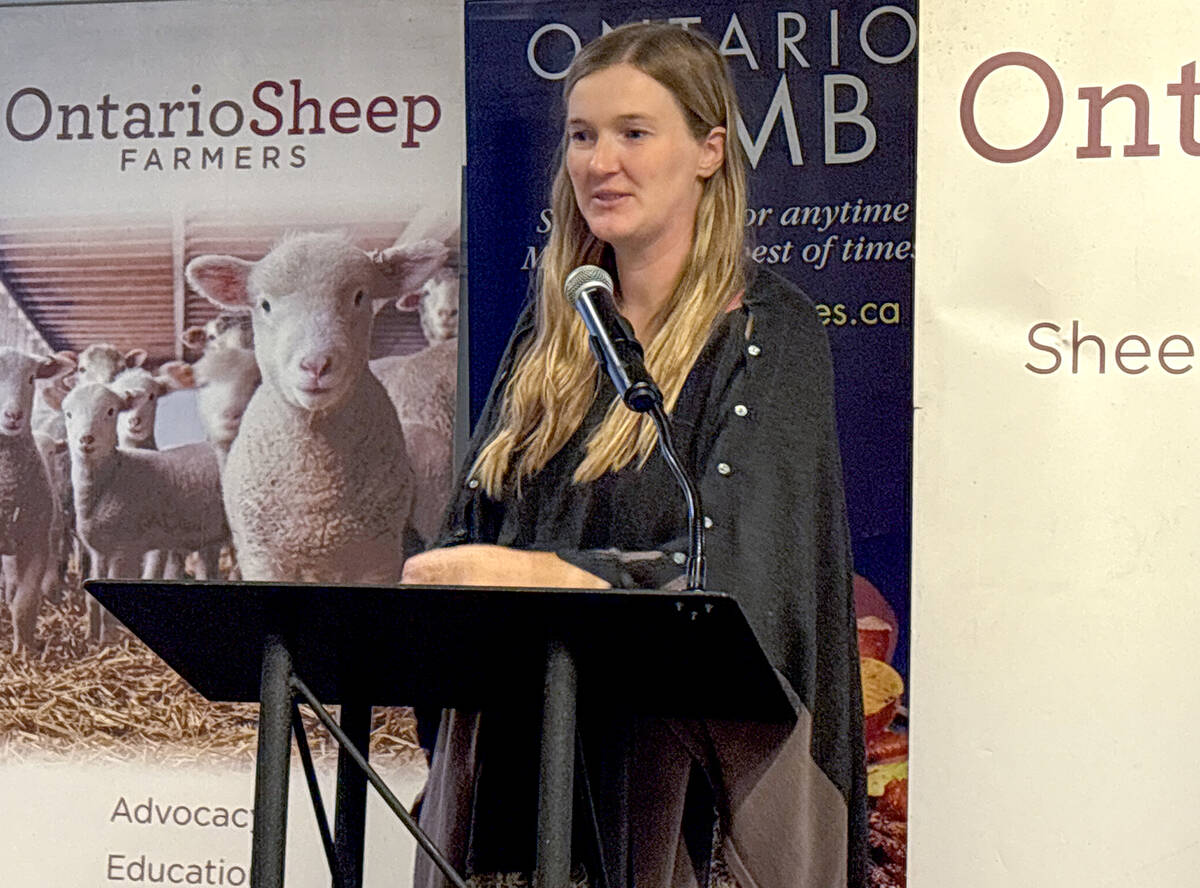A new report says housing is a major issue for rural Ontario, and solutions to this problem will be complex and varied.
Why it matters: Increasingly, operators of farms and farm-related businesses are identifying housing availability for employees as a significant financial stumbling block.
The Greenbelt Foundation, an independent not-for-profit agency that’s provincially-funded, recently released a report delving into what it calls “the pressing issue of housing shortages for farm families, on-farm workers and agri-business employees in Ontario’s rural areas.”
Read Also

Footflats Farm recognized with Ontario Sheep Farmers’ DLF Pasture Award
Gayla Bonham-Carter and Scott Bade, of Footflats Farm, win the Ontario Sheep Farmers’ 2025 DLF Ontario Pasture Award for their pasture management and strategies to maximize production per acre.
In an email, officials from the organization said the group’s vision includes a thriving agricultural sector. “Against the backdrop of Ontario’s broader housing pressures and recent economic challenges, this research sought to understand housing needs in rural communities,” wrote Shelley Petrie, Greenbelt Foundation program director, and project consultant Dr. Wayne Caldwell, when contacted by Farmtario.
The new report groups its recommendations into five categories:
- housing and farm worker accommodation;
- municipal capacity and planning processes;
- infrastructure and servicing for rural and agricultural areas;
- land and environmental protection for agricultural sustainability; and
- economic and community development in rural areas.
Broadly, the foundation summarized the main recommendations as:
- Maintain existing additional residential unit (ARU) policies under the Greenbelt Plans and Provincial Policy Statement (PPS) 2024 and consider expanding these policies to agri-businesses.
- Collaborate to promote innovative housing solutions for farm workers and agri-food businesses.
- Integrate agricultural housing needs into municipal housing and agricultural strategies.
- Develop rural infrastructure strategies to support agricultural and housing needs.
- Plan for sustainable housing development and complete communities while protecting farmland.
Complexity
Key to the report was the need for diverse solutions to this complex problem, in which solutions are bound by the Provincial Planning Statement.
“The PPS is the primary document for land use planning policy in Ontario, working together with policies in the Greenbelt Plans,” notes a historical background section of the report. An updated PPS, came into effect in October 2024.
It revised the definition of agricultural uses to include housing for farm workers, which provides more flexibility to provide housing for farm owners and labourers working in seasonal or part time roles.
During public consultation, a proposed change to the PPS that would have allowed up to three additional residential units per parcel in prime agricultural areas was pared back. Under the new rules it allows two, but at least one of those must be “within or attached to” the farm’s principal dwelling.
Local issues
Perspectives on multiple ARUs appear to vary depending on how much urban pressure exists on farmland.
“First considered by county in 2019, ARUs have become increasingly accepted as a means of providing additional housing in both rural and urban settings,” states the section of the report featuring a case study of Huron County.
A farm owner is quoted in the section: “We have a couple friends – one a dairy farmer, another a pork farmer and they were renting multiple homes in the local villages to house their staff, and now that they are allowed to build these secondary residences that house staff at the farm where they’re needed, that opens up those residences in the villages, in the communities, for people other than our employees.”
ARUs, though, appear to spur some concern among planning specialists in the Niagara and Durham Region case studies — both of which have significant urbanization pressures and at least some of their territory within the Greenbelt.
“While the opportunity to establish ARUs has been pursued elsewhere in Ontario, it remains a point of debate for many municipalities within the Niagara Region and the Greenbelt more broadly,” offers the report.
A Niagara-on-the-Lake planner expressed reluctance to support the idea “unless there are additional criteria related to the need to cluster those buildings closer together, to have some sort of consideration for not taking additional lands out of agricultural production.”
Local solutions
Responding to Farmtario, Petrie and Caldwell highlighted some of the region-specific strategies that have emerged in recent years in the three jurisdictions.
“Huron County has supported innovative housing solutions including ‘shouse’ and ‘barndominium’ structures on farms, and apartment-style housing that is available for farm workers within settlement areas,” they explained.
Niagara Region, meanwhile, aims to respond to specialty-crop producers who “require solutions to house large workforces with fluctuating numbers year-round. Modular and prefabricated homes are an emerging opportunity, aligning with the need to avoid permanent structures.”
And in Durham Region, “Agriculture Advisory Committees at both the regional level and within the Town of Clarington have proven effective in fostering collaboration on cross-cutting issues such as housing,” they said. “These committees promote awareness of agriculture housing needs and provide education on the potential impacts of residential housing policies, contributing to more coordinated and responsive planning.”
In a narrow 4-3 vote on June 6, Stouffville Town Council approved a recommendation to ask the province to bring the Greenbelt in line with the PPS 2024 and allow up to two ARUs on all rural properties even within protected areas. The Greenbelt Foundation sent Council a letter opposing the move.
Arguments in favour included enhancing the ability of rural businesses to continue profitably, while arguments against included the prospect of losing additional protected lands to residential buildings that ultimately end up being operated as short-term rentals.
In depth
The creation of the new report was overseen by a broad advisory committee of local governments, a provincial representative from the Agriculture, Food and Agribusiness ministry, and representatives from the Ontario Federation of Agriculture, the National Farmers Union-Ontario and the Rural Ontario Institute.
It began with a review of planning documents of relevant municipalities, and then incorporated more in-depth case studies of Huron County, Durham Region and Niagara Region.
Work leading up to writing the report culminated in a Sept. 13, 2024 workshop where participants worked through various potential solutions.
Petrie and Caldwell said some cross-province similarities were evident through the team’s interactions in the three case study jurisdictions. “
“Housing policies that direct residential housing within existing settlement areas — through increased intensification and densification — support agriculture,” they told Farmtario.
They also noted a need for innovation to support housing solutions and changes that have occurred in agriculture over time.
“Supports are needed that strengthen municipal capacity to respond to local needs including greater collaboration with the province to provide education, training and other resources,” they wrote.















